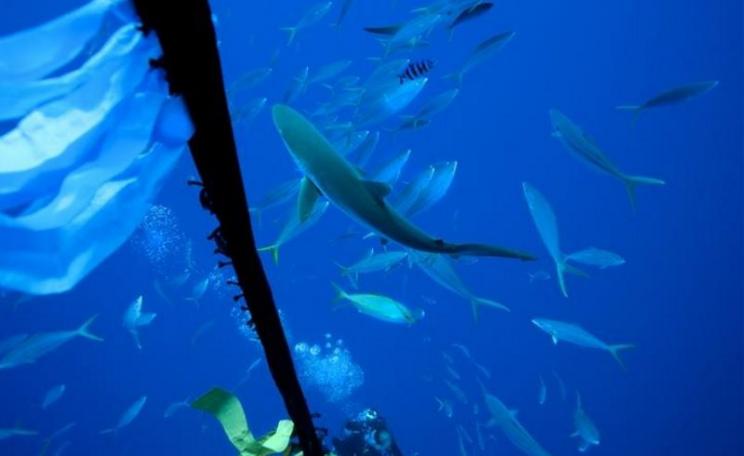Manufacturing technologies could totally revolutionise the way we produce food, not only avoiding the gross inefficiencies of animal agriculture, but bypassing the farm completely.
If you manage to upset everybody, you must be doing something right. Presumably that was George Monbiot’s logic when producing his latest documentary, Apocalypse Cow: How Meat Killed the Planet.
The documentary is highly critical of the global farming system, particularly animal agriculture, highlighting its role as the leading cause of natural habitat destruction.
His journey also took him to the Highlands of Scotland, to show the environmental damage caused by overgrazing. He concluded that deer population control is needed, and illustrated this point by personally shooting a stag.
Sheep
This provoked a strong reaction online, leading to much debate in vegan communities. But his wider point, about the global impact of animal agriculture, provoked an even stronger reaction from animal farmers and industry bodies.
By now there is a huge weight of evidence for the climate and environmental impact of animal agriculture, and no serious environmental organisation would deny that reducing global consumption of meat and dairy is important.
So perhaps the most controversial part of the show was Monbiot’s suggestion that innovative food manufacturing technologies were an answer to the crisis in agriculture. But do these claims stack up?
The response from the UK farming community contained a familiar argument: that environmental standards of animal agriculture in the UK are higher than in other countries. Why should British producers be tarred with the same brush?
While it may be true that cows and sheep in the UK are less dependent on imported feed than in some other countries, this is at the expense of vast areas of UK land.
Meat
Monbiot characterized this phenomenon as ‘agricultural sprawl’, highlighting the fact that 51 percent of the UK’s land mass is used by grazing animals.
Not only has this been a disaster for animal and plant life, destroying the rich habitat diversity of the UK landscape, but it has eroded our ability to store carbon dioxide in woodland, which is our most effective carbon capture technology by far.
The impact of the UK’s demand for animal feed is still enormous, with intensive chicken farming as the biggest culprit: 3.2 million tonnes of soy are imported annually, most of which comes from South America, where it continues to drive rainforest destruction.
Manufacturing technologies could totally revolutionise the way we produce food, not only avoiding the gross inefficiencies of animal agriculture, but bypassing the farm completely.
Two- thirds of this is imported as soybean meal and fed directly to farmed animals. The remainder is imported as whole soybean, most of which is also crushed and added to animal feed.
The issue becomes even more critical when you consider that global demand for food, especially meat, is still increasing. This is driven by changing consumption patterns in developing countries and population growth.
Physics
Monbiot ended the programme on a more optimistic note: manufacturing technologies could totally revolutionise the way we produce food, not only avoiding the gross inefficiencies of animal agriculture, but bypassing the farm completely.
These technologies range from vertical farms to cultured (or ‘lab-grown’) meat, and even ‘Solein’, a protein made by bacteria fed with CO2, hydrogen and energy.
But do these technologies stack up? Studies suggest that cultured meat protein has a much lower land use, with some studies claiming that it is 60 to 300 percent more efficient than chicken and 2000 to 4000 percent more efficient than beef in terms of land use.
Solein boasts similarly impressive land-use savings, with Solar Foods claiming that it is 1,000 times more efficient than beef. Similar claims are made about water and emissions savings.
But amid such impressive statistics, it’s worth noting that these technologies are still bound by the laws of physics: they cannot produce something from nothing.
Solution
One major drawback is that these processes require a lot of electricity. Monbiot points out that the Solein process is much more energy efficient than growing plants to feed to animals.
But are we to some degree simply replacing the energy used up through biological functions, such as digestion and nutrient circulation, with industrial processes?
So, the environmental credentials of these technologies depend on the availability of electricity and the impact that future sources of electricity will have, such as the materials required to produce solar panels.
They also require nutrient inputs and, in the case of cultured meat, growing medium and starter cells, which are animal derived, so not yet vegan.
There are also concerns about the cost of these production methods. They can hardly be regarded as a solution to our current crisis if they are prohibitively expensive until the second half of the century.
Food system
The makers of Solein claim that their product could be around $6 per kilo, and believe they will be able to sell it at this price. But even if this is taken at face value, it would have to come down rapidly to compete with conventionally produced animal and plant products.
These technologies could revolutionise the way we produce food in the future, and they should be cautiously welcomed as a possible way to meet growing demand for land and resources.
But they can’t be treated as a magic bullet, and we’re going to be relying on soil to grow our food for a long time to come.
Consumer pressure, industry direction and policy changes should be encouraging a switch to plant-based diets as the safest, fastest and most reliable way to reduce the impact of our food system.
This Author
Tim Thorpe is a campaigns and policy officer at The Vegan Society. He has a background in environmental science and conservation and writes about farming and environmental issues. Interested in veganism and the environment? Why not take the seven-day planet-saving vegan pledge at www.vegansociety.com/plateup.







